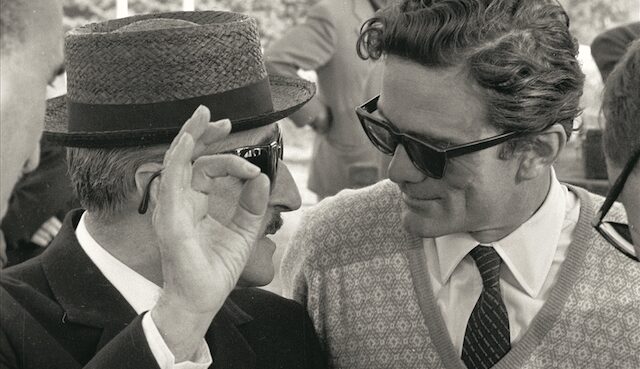
If your summer travel plans include a trip to the Eternal City, there is one lesser-known place you won’t want to miss.
The Biblioteca Nazionale di Roma (National Central Library of Rome) is a treasure trove of information on the most important figures of Italian literature. Many contributed to screenplays and wrote books from which films were adapted. Entering the library, you will see an inviting exhibition area called the Spazi900 museum. Upon entering the space, you will find yourself in a whole different world.
The Sala Pasolini (Pasolini Rome) is dedicated to the films Pier Paolo Pasolini made based on his own works of literature. Walking through, you will see audio-visual installations featuring the locations where Pasolini shot some of his most iconic films, including “Accattone” and “Mamma Roma,” and hear Pasolini himself talking about his work.
A larger-than-life panoramic image of a scene from his 1966 film “Uccellacci e uccellini” (The Hawks and the Sparrows) graces one wall of the space. The image depicts the two main actors, the legendary Neapolitan actor, Totò and Ninetto Davoli, walking along a park on the outskirts of Rome. It’s a poignant photograph because the film was Totò’s last role before he suffered a fatal heart attack in 1967.
Just before the pandemic hit, a permanent exhibit was added to the vast collection of artifacts and writings that pays homage to the great intellectual, novelist, doctor, and painter Carlo Levi.
Located next to the Sala Pasolini, the exhibition features objects relevant to Levi’s novel “Christ Stopped at Eboli,” the inspiration behind the 1979 epic film by Francesco Rosi. If you watched the film, you’d be familiar with the paintings that Levi created while exiled in Lucania. So, you’ll be thrilled to see a self-portrait created by Levi in 1936, which not only refers to the artist’s iconography but represents that period of exile, which lasted from August 1935 to May 1936.
Levi created portraits of his literary friends upon his return from Lucania, incorporating the “wavy brush stroke” style he developed there. One of them, Eugenio Montale, favorably reviewed “Christ stopped at Eboli.” His portrait is exhibited in the space along with those of Cesare Pavese, Italo Calvino and Rocco Scotellaro, proof of Levi’s literary relations and lively participation in the cultural environment of the time. Works by Montale and Calvino are featured in the Writers’ Gallery of the Spazi900. Levi’s portrait of Elsa Morante, a writer and collaborator of Pasolini, is displayed in the Spazio Morante along with a 1977 documentary film about her by Francesca Comencini.
I highly recommend a visit to this library and museum. Speaking from personal experience, it is simply awe-inspiring to be in the presence of artifacts representing these Italian writers’ immortal works and close friendships.
The Biblioteca Nazionale di Roma is located at Viale Castro Pretorio, 105. Follow this link to visit the library online.. http://www.bncrm.beniculturali.it
The following films are available to stream on the Criterion Channel.
“Mamma Roma” by Pier Paolo Pasolini
“Accattone” by Pier Paolo Pasolini
 Fra Noi Embrace Your Inner Italian
Fra Noi Embrace Your Inner Italian






